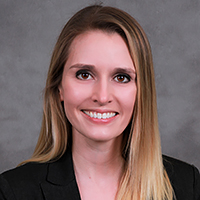Physicist and best-selling author speaks at Sinai Forum
Lawrence Krauss, theoretical physicist, speaks to audience members at the Sinai Forum on Oct. 15.
Lawrence Krauss, theoretical physicist and founder of Arizona State University’s Origins Project, spoke about the nature of reality and science at the Sinai Forum at the Westville campus on Oct. 15.
Krauss is the best-selling author of “The Physics of Star Trek” and “A Universe from Nothing.” He explained because many scientific discoveries prove the same thing, the world is actually more simple than complex.
Kraus said that experimental physicist Michael Faraday and later theoretical physicist James Clerk Maxwell proved electricity and magnetism were the same in the 19th century. Faraday also showed magnetism could create electricity.The two phenomena were already known to be connected because electricity could change the magnetic reactions of a compass. However, Faraday showed magnetism could create electricity.
“That made the modern world possible,” Krauss said, citing the use of magnets in waterfalls to create electricity.
Later, Maxwell created equations showing that all observations of electricity and magnetism can be explained by an electromagnetic field. However, his work led to the discovery of another unification, because he found the speed of electromagnetic waves was the speed of light.
“Light, which allows us to learn about the world around us, is just an electromagnetic wave,” Krauss said, summarizing Maxwell’s discovery.
In the 20th century, Albert Einstein unified Maxwell’s discovery with the apparently contradictory Law of Inertia developed by Galileo Galilei in the 17th century.
“The only way they could be true at the same time is if distance and time are relative,” Krauss said, describing the new concept of space-time. “This world we see, this three-dimensional world, is really a four-dimensional world.”
This case rebuts a common misunderstanding of science, he said. Whereas some people think scientists are always throwing out old theories and science is therefore pointless to learn, scientists finds new ways to align old observations with new ones.
“What satisfies the test of experiment is true. It’s not about your ideology,” Krauss said.
Krauss described the unification of light photons, mass measurement and the theory of quantum mechanics with superconductivity. This leads to a possible problem with electromagnetism and normal atoms, but the discovery of the Higgs field may be the answer.
“Maybe we live in a superconductor, and that would solve this problem,” he said. “The particles in our bodies are massless on some level.”
He said the discovery of Higgs particles in the Large Hadron Collider on July 4, 2012, was a date of cosmic significance. The quest to explain reality now moves in a new direction.
“Sure, this Higgs field is there, but why is it there?” Krauss asked. “Every time we make a new discovery, it brings new questions.”
Aaron Warren, associate professor of physics, said he loved Krauss’ emphasis on the need to continue to ask questions. Warren said the Higgs field is a major area of research right now, and scientists have several exciting ideas.
Rick Urschel, CEO of Urschel Laboratories and a forum sponsor, suggested the forum invite Krauss and introduced him at the event.
“You can talk about photons all night long and not even scratch the surface of it, but if people stop asking why, then we’re lost,” Urschel said.



